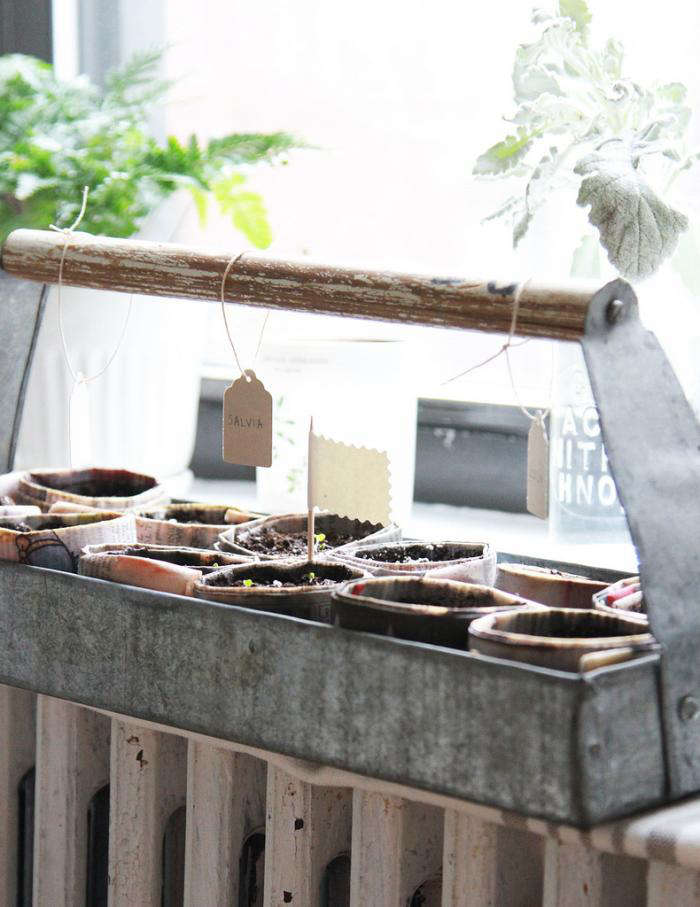In the northernmost parts of Scandinavia the growing season is 60 days long. The rest of the year is basically a prelude to or a recovery from winter. This is all you need to know to understand the local impulse to spend every possible moment living outdoors, wallowing in nature. A picnic table, outdoor tub, and stylish privy will get you through the summer months just fine.
These are not people who take their gardens for granted. Nor do they fuss over them, or try to force nature to assume an artificial symmetry. Self-sowing wildflowers are rampant. Manicured lawns and precisely pruned shrubs, not so much.
Wondering how to achieve a similarly relaxed and ecstatic relationship with your own garden? Here are 10 tips:
Move to the Outdoors

Live outdoors as much as possible. For your indoor rooms–kitchen, shower, bedroom, living room–create corresponding outdoor spaces to which you can decamp in summer. These don’t have to be overly complicated or costly; an outdoor kitchen can consist of a couple of shelves under an eave where you store plates and cups (near an outdoor spigot for washing up), a dining table and chairs, and a grill.
Recycle, Reuse, Reclaim

Use natural and recycled materials. Weathered wood, old benches, and metal bins transformed into planters are gentle incursions on nature’s domain.
Trust Nature’s Palette

Use colors found in nature. As backdrops, gray, brown, white, and green will complement the plants and trees in the surrounding landscape. For our favorite shades of green, Black, Gray, and White–as well as other colors–see our Palette & Paints archive.
Blend In

Take a minimalist approach to hardscaping elements such as paths and fences–”less is more”–to allow them to blend into their natural surroundings.
Something Wild

Don’t try to tame your garden. After blooms are spent, leave seed pods in place. Encourage volunteers to grow in cracks. If you feel an urge to hard prune something, try picnicking until it goes away.
Go with the Flow

Learn from your plants. Take note of the ones that are flourishing in your garden; they are happy with the sunlight, soil, and water conditions. Let them spread as they want, and don’t waste your time coddling weaklings or laggards.
Build a Privy

That’s utedass to you, in Sweden. Traditionally, these detached buildings–wilderness toilets, if you will–sit near cabins in rural areas. Throwbacks to a simpler time, the privies often built of scrap wood and are austere in design, providing a reminder of how close to nature you can get if you want. For another modern version, see Outbuilding of the Week: A Stylish Swedish Outhouse.
Live for the Light

Take advantage of the light. In Scandinavia, the changeable northern light is an everyday fact of life. In your own garden, you can study the light to see how it moves across your property. What elements–outbuildings, second stories, tall trees–create shady pockets in the garden? Does the sunlight hit your garden differently in spring, summer, and fall? Plant accordingly.
Be Brave in Winter

Don’t give up gardening in the winter. Set up a potting shed or indoor area that’s pleasant to work in when the weather is inhospitable. Whitewashed walls, open shelving, pegs to hold tools, bins of soil, and a few terra cotta pots should be enough to lure you in January.
Pamper Pelargoniums

Pot some pelargoniums. Equally happy as houseplants in winter and as patio companions in warm weather, pelargoniums are that rare thing: the true indoor-outdoor plant.
N.B.: For more Scandi style, see An Architect’s Dream Commission in Norway. And see more posts about garden design around the world:
- 10 Garden Ideas to Steal from Belgium.
- 10 Garden Ideas to Steal from France.
- 10 Ideas to Steal from English Gardens.












Have a Question or Comment About This Post?
Join the conversation (3)